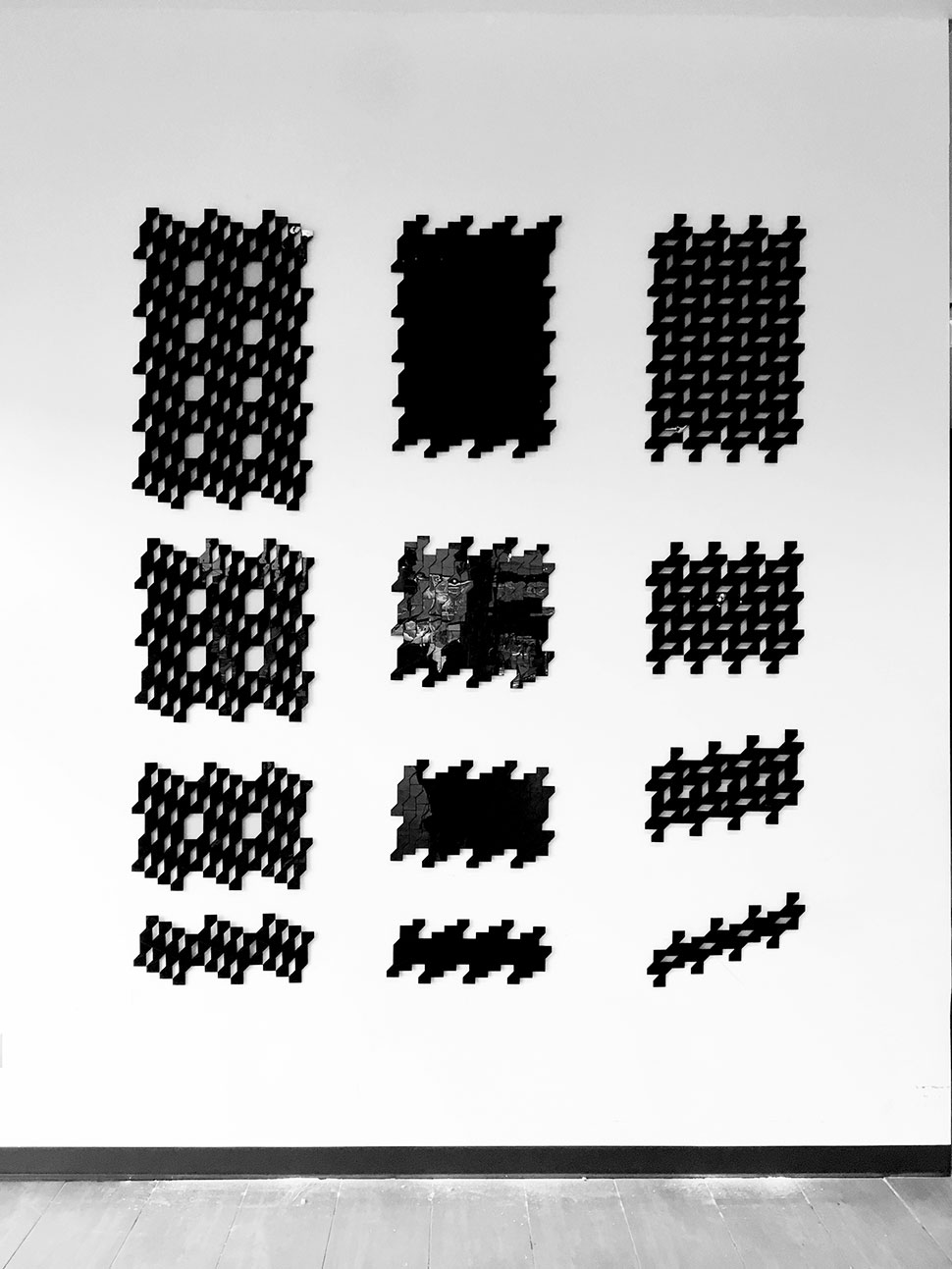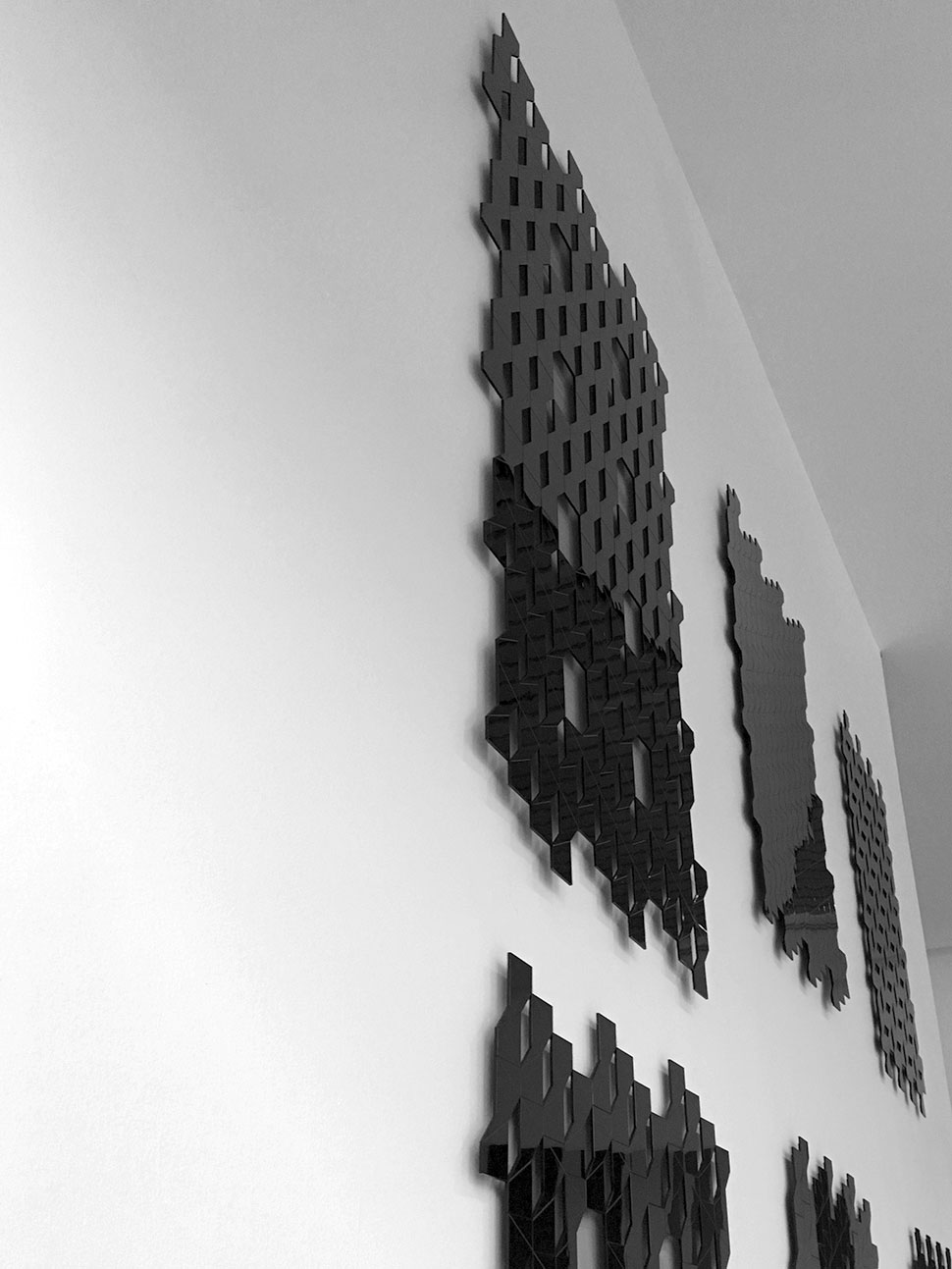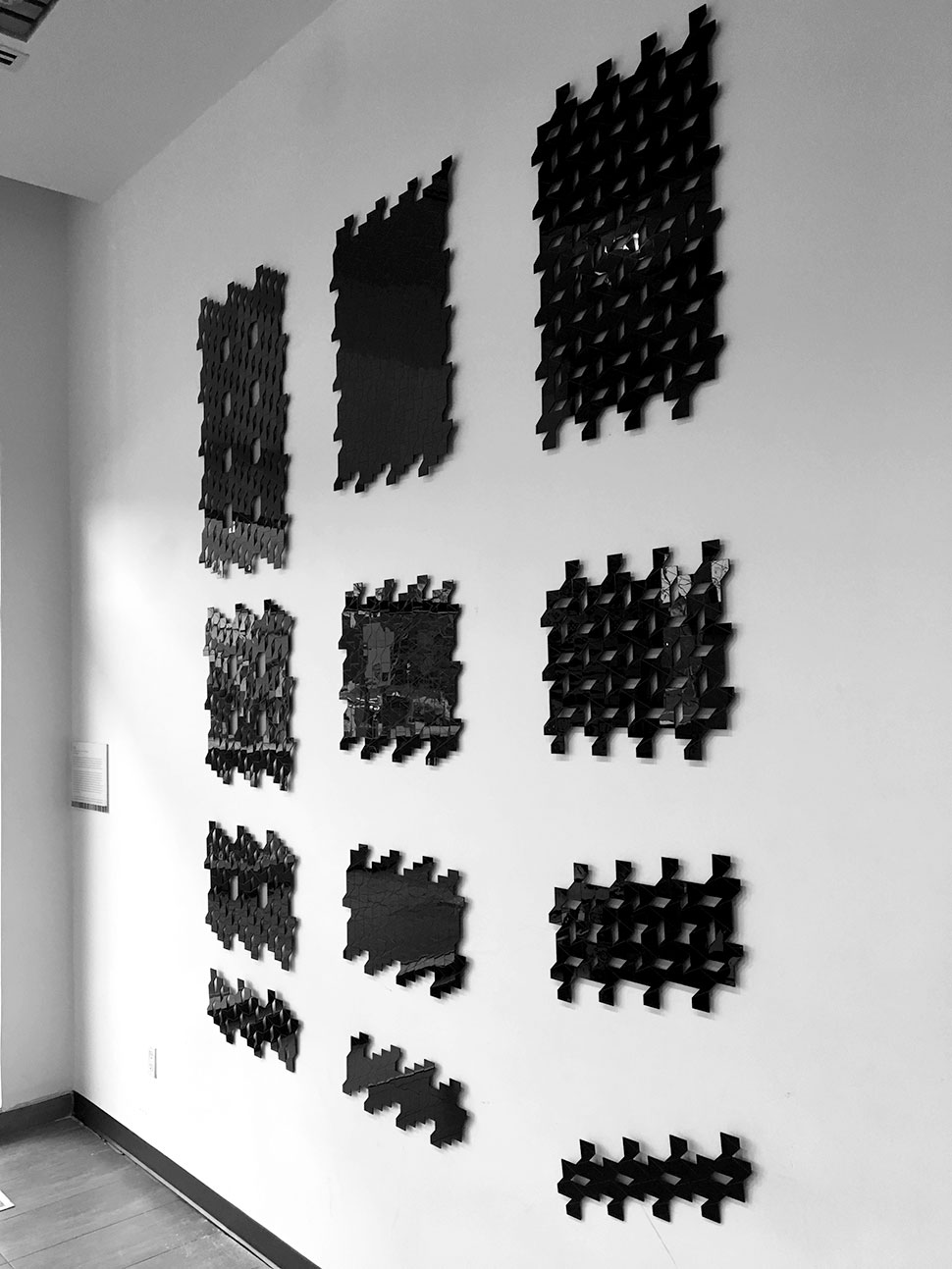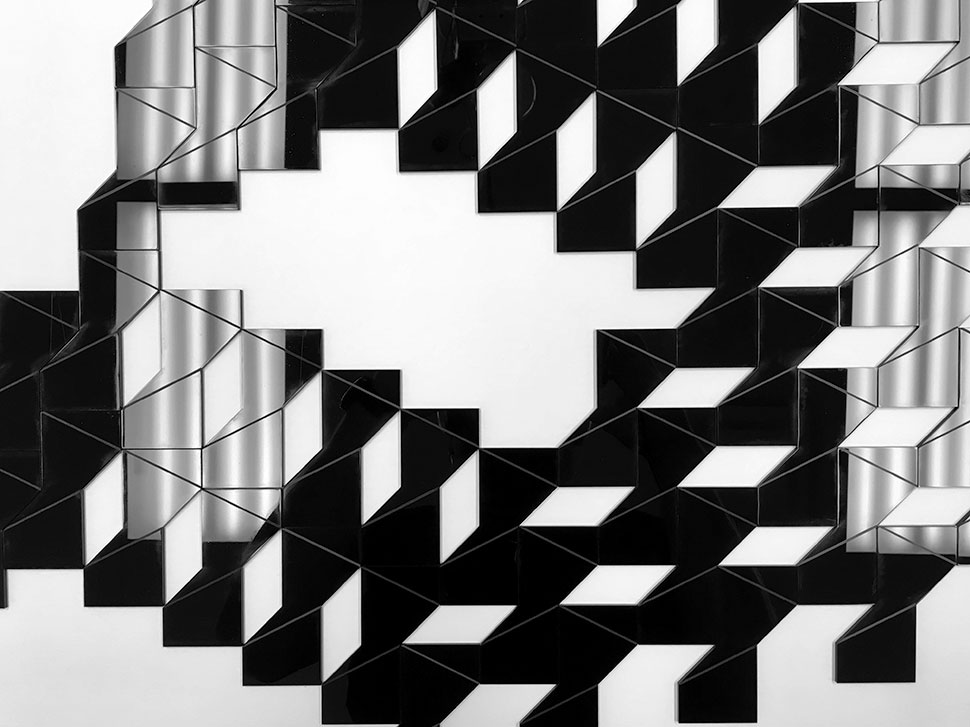Pattern Recognition
Solo Exhibition /2019
‘Pattern Recognition’ seeks to create an interpretive visual pattern language that strings together single node pixel elements into complex object patterns. From these synthetic pixel compositions, meaning emerges. An individual recognizes pattern, depicting one of many possible configured realities.
‘Pattern Recognition’ is a series of work that explores the transformative effects of translating flat, 2-dimensional patterns into objects that also hold meaning and can transform 3-dimensional space. The patterns are initially hand generated in computer space, the emergent forms based loosely on the need to create distinction and meaning out of a meaningless single pixel unit. Sometimes there is reference to man made architecture and form, other times letters and alphabet, as well as human figures: ‘human things’. The process itself seeks to create a visual language by stringing together singular elements like those of an ‘alphabet’, where then meaning begins to emerge through the recognition of image. However, beyond the creator’s (mine) own logic, meaning also emerges through interaction with the ‘other’, the ‘viewer’, who in their own moment of encounter begin to seek out and recognise their own patterns.
The nature of the single unit pixel, as a synthetic element that once strung together within a coded composition depicting ‘reality’, is something we share with machines. We construct and render imagery that in their single units of color and form are meaningless until they become compositions representative of something meaningful, made either to carry out a function (computer) or communicate a narrative (human).
The nature of the design is that you can play with both the amount of negative and positive space. The reflective nature of the acrylic absorbs and refracts light, while the engraved inner pattern floats above, offering a spatial dimension.
The work is made of laser cut and engraved black acrylic tiles, held together with a light mesh cloth and plastic welding adhesive so as to create a soft but stiff piece. This also allows for it to be hung in space and becomes more fluid. It is best mounted to a wall. The piece is currently designed to occupy a wall that is 12 feet by 13 feet, but can be modified.







